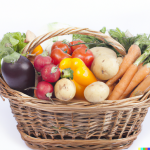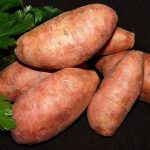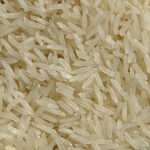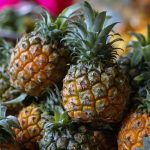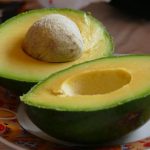How to Take Care of your Diabetes?
We live in a world where diabetes is a very common word. More than half of the world population suffer from this disorder. Some people say that it is a hereditary disease, while some argue that it depends on our eating habits and lifestyle. The truth is that both these arguments are true.
How much do you know about diabetes? A lot of people might have told you that they are diabetic. Do you think all of them have the same type of diabetes? If so, you are absolutely wrong. There are three main categories of diabetes which are as follows :
- Type 1 diabetes
- Type 2 diabetes
- Gestational diabetes
- Maturity-onset diabetes of the young (MODY)
- Latent autoimmune diabetes of adults (LADA)
Type 1 Diabetes
Type 1 diabetes is caused when your immune system accidentally destroys the beta cells present in your pancreas. As a result, your pancreas will release very less or no insulin. This will lead to the increase in sugar levels in your body. This type of diabetes is usually treated by taking in insulin supplements.
Though it is not possible to get rid of type 1 diabetes, you can control it by taking proper care of your eating habits and lifestyle. Along with the intake of healthy foods, you also should exercise regularly to be on the safer side.
Choosing the correct diet can be a hassle when you have diabetes. Below mentioned are the odds which you should and shouldn’t eat if you are a type 1 diabetic.
What to Eat in Type 1 Diabetes?
A lot of people might advise you to cut down your supply of foods with high sugar content to control your diabetes. However, type 1 diabetes people can follow the same healthy diet like other non-diabetic people. The foods which are considered healthy for type 1 diabetic people are mentioned below.
Fiber – One of the best means to control your diabetes is by adding more fiber to your diet. You can do this by consuming more fruits, vegetables, whole grains, and beans.
Carbohydrates – It is not recommended to consume carbohydrates in large quantities. However, you can include a maximum of approximately 15 grams of carbohydrates in your diet. The best foods which will help you get this include brown rice, oatmeal, lentils, vegetables, and fruits. The aforementioned items belong to complex carbohydrates. Type 1 diabetic people should concentrate on such carbohydrates instead of simple carbohydrates such as pastries, sugar, white potatoes, etc.
Proteins – You can consume as many protein-rich foods as you wish. This is because they have only a little effect on the blood sugar levels. They include soy foods, nuts, beans, seeds, organic dairy products, eggs, turkey, yogurt, seafood, fish, legumes, and peas.
In addition to this, you can also consume all types of non-starchy vegetables such as green leafy vegetables as much as you want. This will help you to control your blood sugar levels.
What not to Eat in Type 1 Diabetes?
Fatty foods – Diabetic people are more susceptible to many cardiovascular diseases compared to others. Hence, it is necessary to avoid unhealthy fatty foods once you are detected with type 1 diabetes. The foods which you should avoid include ground beef, high-fat meat, and full-fat dairy products.
Foods with High-Sugar Content – If you are a type-1 diabetic, you should definitely avoid those food items which have high-sugar content. You can, however, consume food items which are completely sugar-free and contains only artificial sweeteners. If you are planning to consume such foods, please make sure that all the ingredients mentioned are within the prescribed limits.
2. Type 2 Diabetes
Type 2 diabetes is less severe than type 1 diabetes. This is caused due to insulin resistance. This means that the insulin produced by the pancreas is not enough to control your blood sugar levels. This type of diabetes is common in people who are obese. Type 2 diabetes doesn’t require any medicine or other insulin supplements to control the blood sugar. You can easily control it by maintaining your weight and doing regular exercise. You should also follow a healthy diet if you wish to get rid of this disorder.
What to eat in Type-2 Diabetes?
Carbohydrates: They can be classified under the following sub-categories:
- Complex carbohydrates
- Simple Sugars
1. Complex carbohydrates are those which are in their whole food form and include additional nutrients such as:
- Fiber
- Vitamins
- Smaller amounts of proteins and fats
These nutrients slow down the absorption of the glucose and keep blood sugar levels more stable. Examples of complex carbohydrates, or low glycemic load foods, to include in a type 2 diabetes diet meal plan include:
- Grains and starchy vegetables
- Whole Wheat
- Quinoa
- Steel-cut oatmeal
- Vegetables
- Fruits
- Beans
- Lentils
- Brown rice
Whole grains (such as brown rice, quinoa, and oatmeal) are the prominent sources of nutrients and fiber. They also have a low glycemic index which makes them ideal food choices.
Starchy vegetables which are the main sources of nutrients such as vitamin C, with a high content of carbohydrates compared to the green vegetables can also be consumed in limited quantities. Starchy vegetables include:
- Squash
- Potatoes
- Corn
- Other root vegetables
The aforementioned starchy vegetables, if eaten in small quantities will definitely help you to control your diabetes.
Non-starchy vegetables, such as green vegetables, should be eaten in abundance. These vegetables do not have any major impact on the blood sugar levels and are also good for your overall health.
2. Simple carbohydrates – These are foods with high glycemic index. These food items should not be included in your type 2 diabetes diet plan as they might elevate your blood sugar levels. These are mainly processed foods and do not contain any other nutrients which might help to slow down the absorption of sugar content. The major examples of simple carbohydrates, or high glycemic index foods, which are not ideal to be consumed for type 2 diabetic patients are:
- Watermelon
- Sugar
- White pasta
- White bread
- Flour
- Cookies
- Pastries
- White potatoes
- Breakfast cereals
- Pastries and sweets
- Fruit juice
- Pineapples
- Soft drinks
Fats: They do not cause any major impact on your blood sugar levels. They also help in slowing down the absorption of carbohydrates. The different health effects of fat which include:
- Dairy and specifically fermented dairy such as yogurt
- Plant-based fats such as olive oil, nuts, seeds, and avocado
Consuming the food products which are rich in fat content helps to keep you full for a long period of time. They also help to control your hunger pangs and unnecessary cravings.
Protein: Protein-rich food products will always help you to keep your type-2 diabetes under control. Among the different types of proteins, plant-based proteins should always be a part of your meal. Protein-rich food not only keeps blood sugar stable, but it will also help you to control your sugar cravings and increases the feeling of satiety. Proteins can be obtained from both animal and plant sources. however, animal sources of protein are often considered the sources of unhealthy saturated fats.
Best protein products include:
- Lean meats such as chicken and turkey
- Beans
- Legumes
- Eggs
- Fish and seafood
- Organic dairy products
- Peas
- Tofu and soy foods
In order to control your diabetic problem, you need to include all the essential macronutrients (i.e., fat, protein, and carbohydrates) in your meal. This will help to keep your blood sugar levels stable.
A healthy diabetes meal plan must include:
- A lot of vegetables, and
- Limited processed sugars and red meat.
People suffering from type 2 diabetes should be aware of the carbohydrate content in their meals. This will help them prevent the unnecessary increase in their blood sugar levels.
What Not to Eat in Type-2 Diabetes?
The foods which are not ideal for the people with type 2 diabetes are mentioned below:
- Processed carbs (white bread, pasta, chips, saltines)
- Refined sugars (donuts, pastries, cakes, cookies, scones, sweets, candy)
- Sodas: both sugar-sweetened regular soda and diet soda raise blood sugar
- Trans fats such as butter “spreads,” some mayonnaise “spreads” some salad dressings, packaged sauces, bakery goods
- High-fat animal products (red meat, fatty cuts of pork, bacon, sausage)
- High-fat dairy products (whole milk, cream, cheese, ice cream)
- High fructose corn syrup (in soda, candy, packaged convenience food)
- Highly processed foods – novelty sweets, candies, chips, kettle corn, cookies)
- Artificial sweeteners (in processed foods labeled “diet”)
Avoiding processed foods is one of the best methods to control your blood sugar levels. If you are diagnosed with type-2 diabetes, you should definitely follow a healthy diet plan. If not, you might become more vulnerable to various other disorders like obesity and cardiovascular disease.
3. Gestational Diabetes
Gestational diabetes is the type of diabetes which mainly develops during pregnancy (gestation). Like the different types of diabetes, gestational diabetes also affects the breakdown of sugar content (glucose) by the cells. This type of diabetes results in high blood sugar levels which might affect both your pregnancy as well as your baby’s health.
Gestational diabetes might also cause complications during your pregnancy. The best way to prevent these complications is by consuming healthy foods throughout your pregnancy period. It will not only help you control your blood sugar levels but will also keep your baby completely healthy.
Yet another important fact of this type of diabetes is that the blood sugar usually becomes normal soon after the delivery. However, people with gestational diabetes are more susceptible to type-2 diabetes.
What to Eat in Gestational Diabetes?
If you have gestational diabetes, you should maintain a healthy and balanced diet. This might help you manage your symptoms without the help of any medication. In general, your diet should include protein plus the right mix of carbohydrates and fats. Consuming too many carbohydrates can also increase your blood sugar levels.
Snacks and meals: Some of the few healthy choices for snacks and meals for people with gestational diabetes are as follows:
- Baked fish
- Fresh or frozen vegetables, especially ones that are steamed
- Eggs or egg whites
- Steel-cut oatmeal topped with berries
- Fresh fruit
- Skinless chicken breasts
- Unsweetened Greek yogurt
- Air-popped popcorn
Fruits: Fruits can be consumed even if you are diagnosed with diabetes. You’ll just need to keep track of how much you’re eating. And for that, you can connect to doctor or dietitian who can teach you how to counting your carbohydrates to make sure you aren’t consuming too much sugar.
- Grapes
- Apples
- Berries
- Citrus fruits
- Pineapple
- Mango
- Papaya
- Cantaloupe
What Not to Eat in Gestational Diabetes?
Once diagnosed with gestational diabetes, you should avoid highly processed foods, such as white bread, and, in general, anything that has a lot of sugar content. For example, you’ll have to be sure to avoid the following:
- Very starchy foods, such as white potatoes and white rice
- Alcoholic beverages
- Baked food products, such as muffins, donuts, and cakes
- Fried food
- Drinks which have high sugar content such as soda, juice, and sweetened beverages
- Candy
- Fast food
If you lack surety then it is better to ask your doctor about the foods you typically eat. They can help you out in identifying what to avoid.
4. Maturity-Onset Diabetes of the Young (MODY)
Maturity-onset diabetes of the young (MODY) also known as type 1.5 diabetes is a rare type of diabetes. This is commonly seen in young people who are above the age of 25 years. This type of diabetes is non-insulin dependent and has an autosomal dominant pattern of inheritance.
As it lies between type 1 and type 2 diabetes, MODY is commonly misdiagnosed as type 1 or type 2 diabetes and, as a result, patients are often inappropriately managed with insulin when they can be more effectively managed with the oral sulfonylurea.
What to Eat?
The following food items must be included in your diet to control or prevent MODY diabetes:
- Citrus fruits
- Leafy vegetables
- Lean Meat
- Low-fat dairy products
- Brown rice
- Brown bread
What Not to Eat?
The following food items must be avoided once you are diagnosed with MODY diabetes:
- Simple carbs
- Processed food
- Fatty products
- White rice
- White Bread
- Smoking and alcohol
5. LATENT AUTOIMMUNE DIABETES OF ADULTS (LADA)
It belongs to the family of diabetes mellitus type 1 which is mostly seen in adulthood. People who are diagnosed with LADA usually get misdiagnosed as type 2 diabetes based on their age. This happens for people in whom the risk factors for type 2 diabetes such as a strong family history or obesity are prominent.
It is almost impossible to find any ways to prevent LADA type 1 diabetes. Though some of the researchers believe that it can be stopped at a very early stage if diagnosed before the complete destruction of the beta cells happen.
What to eat?
- Low-calorie products
- A balanced diet with a low glycemic index
- Whole grains
- Heart-healthy fats and lean proteins
For a healthy diet recommendation in accordance with the stage of your diagnosis, it is better to consult an experienced medical practitioner.
Conclusion
Diabetes is a disorder which cannot be completely eliminated. However, with a balanced diet and proper medication, you can always keep it under control. If you do not take proper care of your food habits, it might become impossible to control your diabetes even with the help of medicines. Hence, if you wish to have a healthy life, you need to follow a well- balanced diet. Like the old proverb, prevention is always better than cure.
